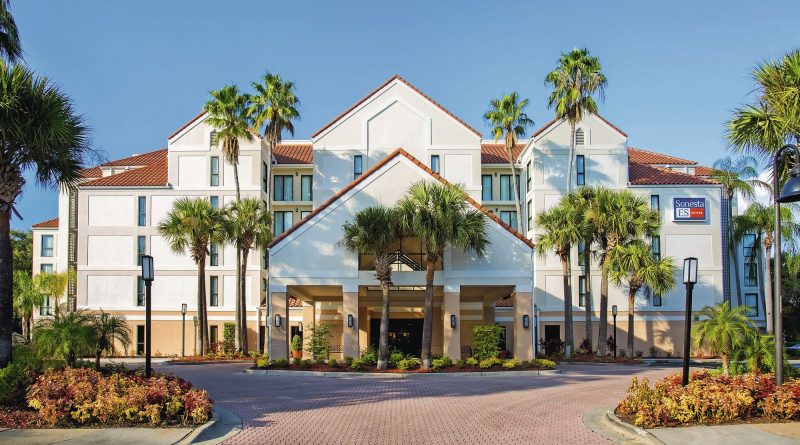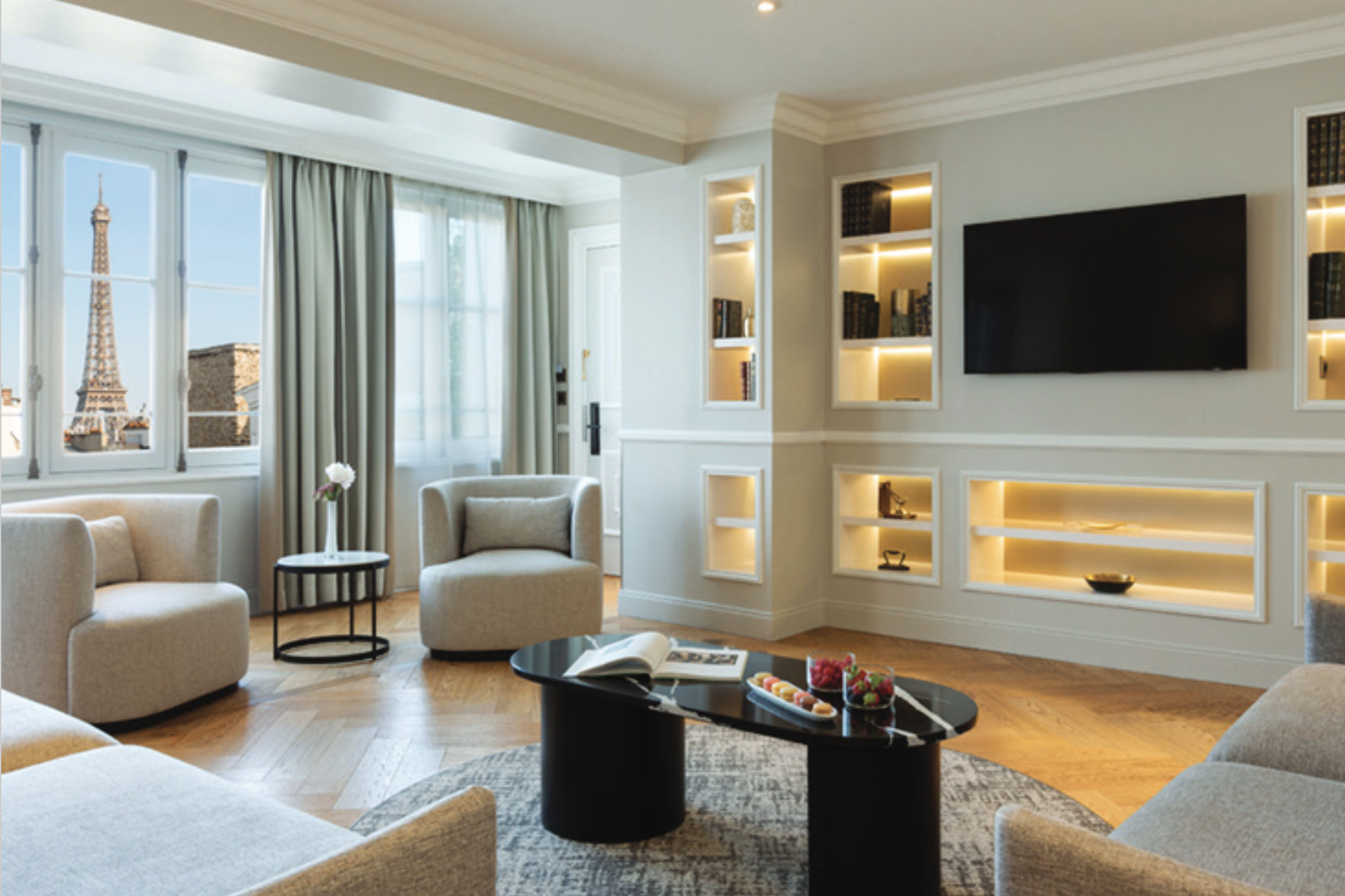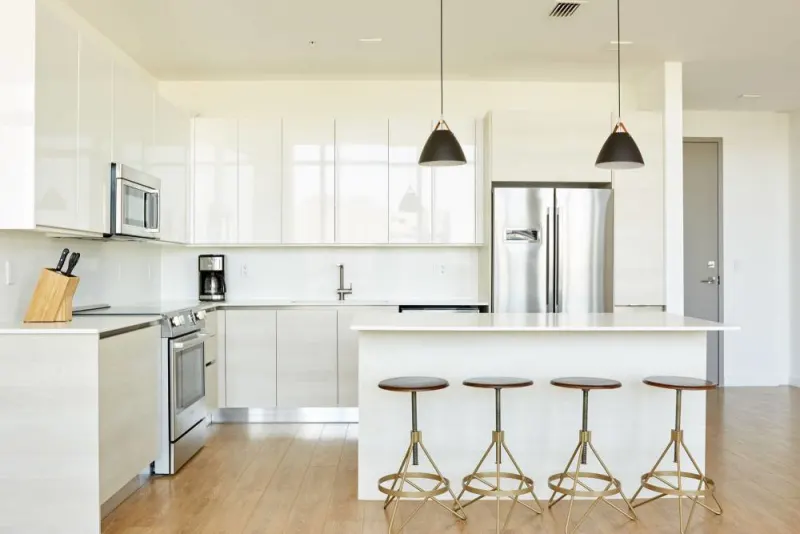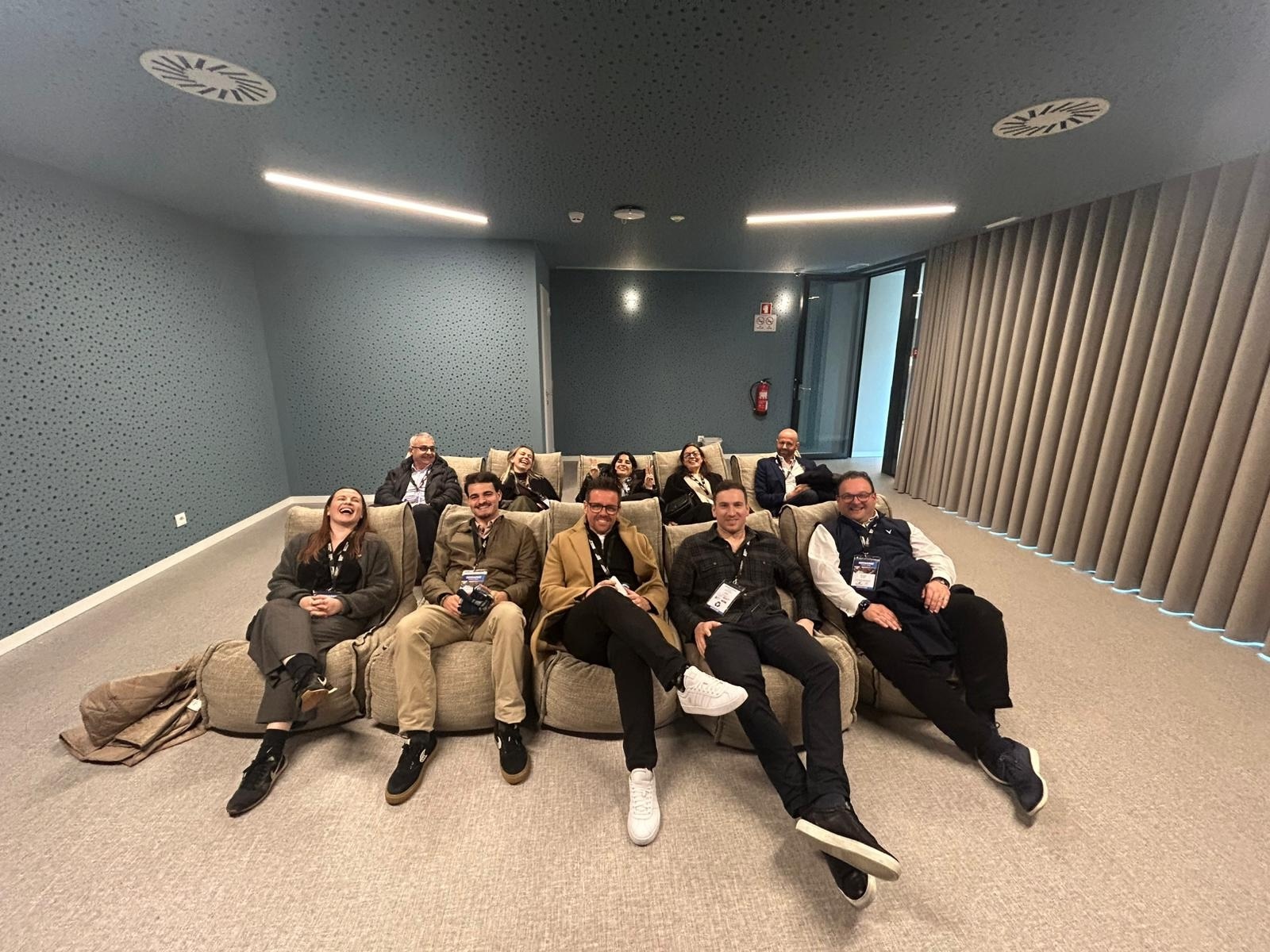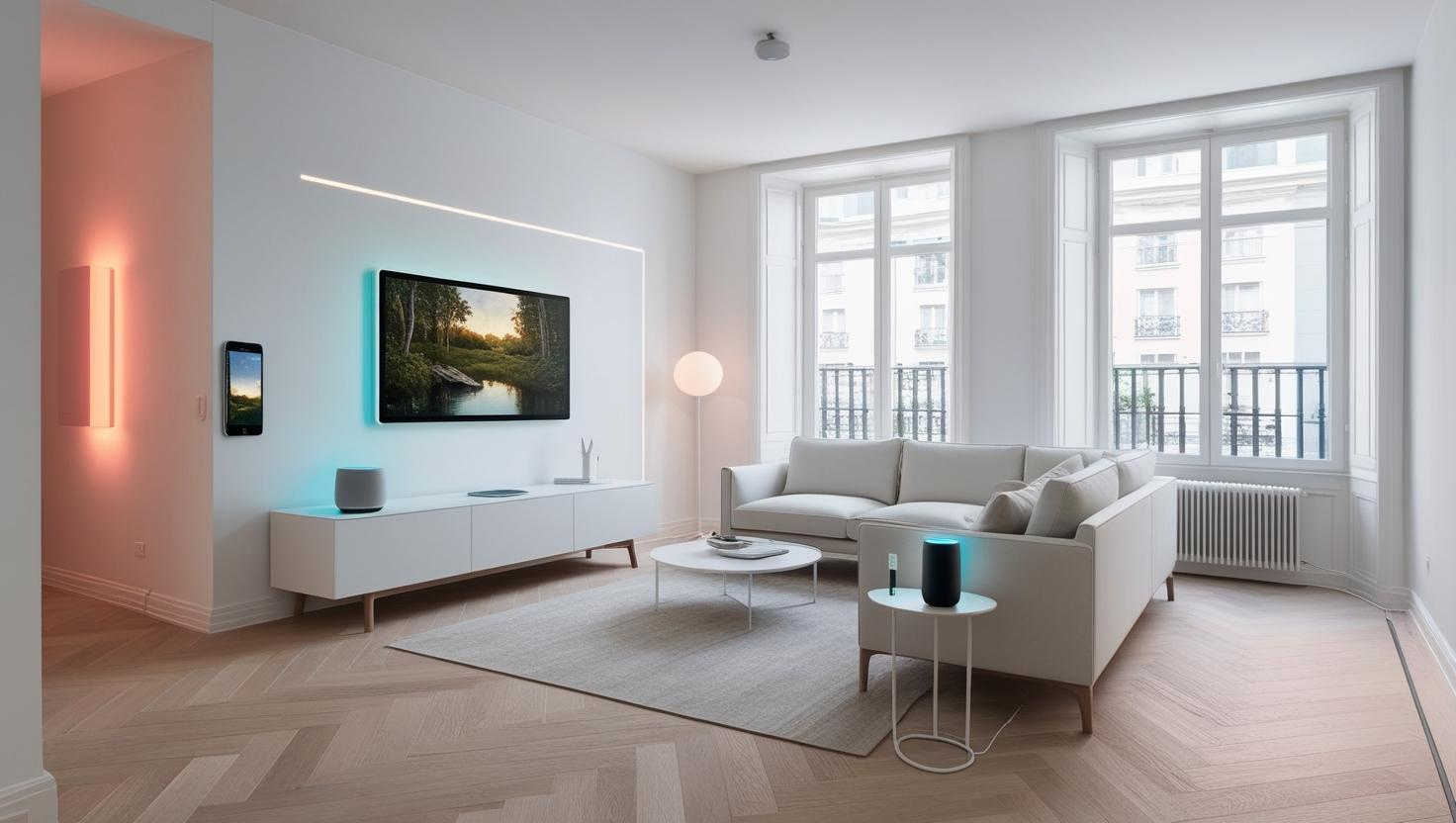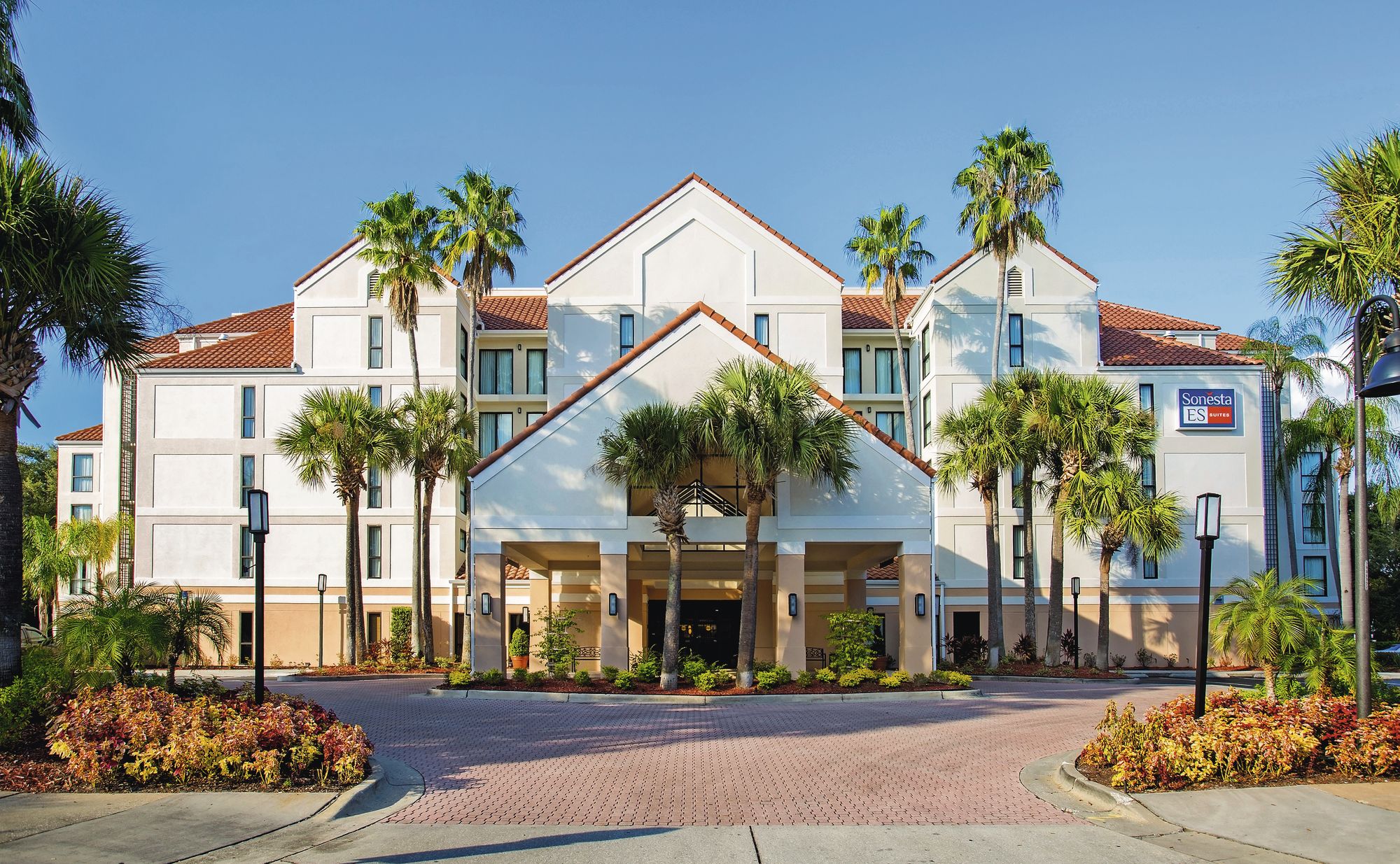
Mark Skinner, partner at The Highland Group, gives SAN the latest snapshot of the flourishing US extended stay market.
Extended-stay hotels have been the fastest growing segment of the US hotel industry over the last 20 years. Early development of the segment was predominantly the higher priced brands. Rapid growth of economy and mid-price brands started in the late 1990s. Explosive growth begged the questions of the true size of extended-stay lodging demand and how many more longer term guests extended-stay hotels could capture from traditional hotels. A newly released report from The Highland Group and Kalibri Labs reveals that demand is larger than most informed opinions would have thought and there remains a sizeable development opportunity for extended-stay hotels.
In the US an extended-stay hotel has a fully equipped kitchenette in the guest rooms, accepts reservations and does not require a lease. The non lease requirement is a clear difference from corporate (furnished or serviced) apartments, most of which are on residentially zoned land and cannot accept guests for less than 30 consecutive nights by ordinance. Corporate apartments are usually leased, furnished by the corporate housing provider and then sub-leased to the guest via a lease agreement. Short-term rentals from companies including Lyric, Stay Alfred and Sonder, might not have a minimum stay or require a lease but they are not included in the supply of extended-stay hotels shown in the table following.
Extended-Stay Brands by Average Daily Rate Range
Upscale ($110+) Mid-Price ($60-$110) Economy (under $60)
Element Candlewood Suites (IHG) Affordable Suites of America
Homewood Suites by Hilton Extended Stay America Budget Suites
Hyatt House Hawthorn Suites by Wyndham Home Towne Suites by Red Roof
Larkspur Landing Home 2 Suites by Hilton Intown Suites
Residence Inn by Marriott Mainstay Suites by Choice Hotels Savannah Suites
Sonesta ES Suites My Place Studio 6
Staybridge Suites (IHG) TownePlace Suites by Marriott Suburban Extended Stay Hotels by Choice Hotels
Value Place
WoodSpring Suites by Choice Hotels
Other Independents
Source: The Highland Group
With the number of extended-stay hotel rooms fast approaching 500,000, the USA is the world’s largest region for extended-stay hotel product. Annual room revenues are likely to exceed $14 billion in 2019. Extended-stay room supply has more than tripled over the last 20 years and the segment has consistently increased market share.
Despite two recessions between 1998 and 2018, as well as, in more recent years, the growth of lodging in the shared economy, US extended-stay hotel demand has never declined on an annual basis for the last 20 years. Essentially a price buy at all levels, extended-stay hotels have attracted guests from both lodging and residential sectors.
Demand has grown three times faster than overall hotel demand over the last 20 years.
Average Annual Change in Hotel Room Demand
1998 – 2003 2003 – 2008 2008 – 2013 2013 – 2018 1998 – 2018
Extended-Stay 8.9% 4.2% 5.5% 5.9% 6.1%
All US 1.0% 1.6% 2.1% 3.6% 1.9%
Sources: STR, The Highland Group
Extended-stay hotel room night demand is at a record high and still growing at some of the fastest rates we have seen in a decade. Despite slowing overall hotel demand growth, extended-stay hotel demand accelerated over the last five quarters.
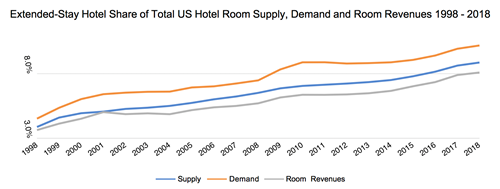
Sources: STR, The Highland Group
The extended-stay segment has absorbed more than 100,000 new rooms since 2013 while maintaining occupancy that has varied little from 76%, a level that has not been exceeded since the peak year 2000.
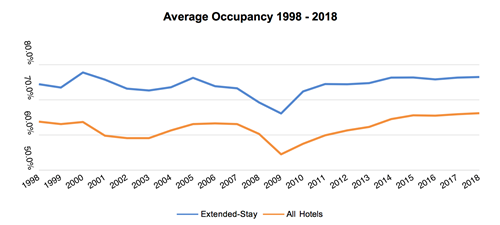
Sources: STR, The Highland Group
Rapid supply growth coupled with high occupancy is driving extended-stay hotel demand. Fundamentally, however, and despite a threefold extended-stay room supply increase over the last 20 years, recent research shows traditional hotels in the USA still accommodate more room nights than extended-stay hotels from guests staying seven consecutive nights or longer.
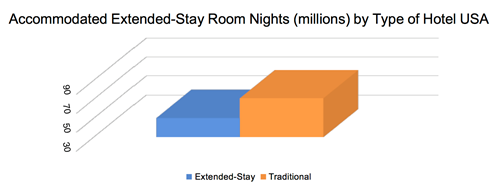
Millions of room nights from stays of 7+ nights during 12 months ending June 2019
Sources: Kalibri Labs, The Highland Group
The report 50 Largest Markets: ALOS, ESOC and More 2019 showed that during the 12-month period ending June 2019 extended-stay guests (defined as staying seven nights or longer) accounted for 50.23 million room nights in extended-stay hotels. In traditional (non extended-stay) hotels extended-stay room nights totaled 71.15 million, a difference of more than 40%. Extended-stay hotels reported a 48% national average demand share (ESOC) from extended-stay guests. The corresponding estimate for traditional hotels is 12% but US traditional hotel room supply is ten times the number of extended-stay hotel rooms, so the absolute number of extended-stay room nights is considerably greater. Moreover, the difference in room revenues paid by extended-stay guests is larger than the difference in room nights because they pay more to stay in traditional hotels for the same length of stay.
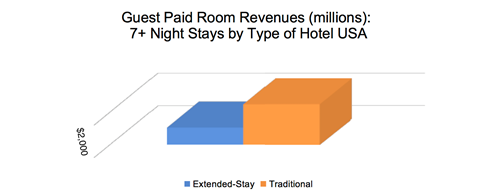
Millions of US dollars including booking fees during 12 months ending June 2019
Sources: Kalibri Labs, The Highland Group
Guest paid room revenues from guests staying seven consecutive nights or longer totalled $4.63 billion in extended-stay hotels. In traditional hotels the same revenues totalled $8.18 billion. The disparity between traditional and extended-stay hotel in both accommodated extended-stay room nights and revenues indicates a very large potential development opportunity for extended-stay product still exists despite the segment’s rapid supply growth and increasing market share over the last 20 years.


